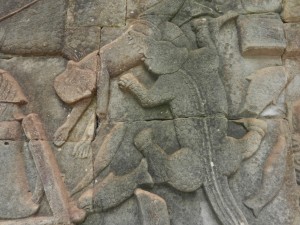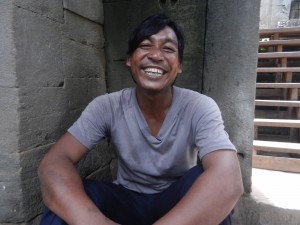by bria4123 on December 18, 2012
When ancient China’s emerging Shang Dynasty conquered the Erlitou culture and became the dominant power in the Yellow River’s Central Plain, cities had already been growing.

Kings were centralizing resources around the royal court. But as more people were moving into cities, class distinctions widened between the newcomers in search of better lives and the established elites in the royal lineages that controlled the state. How the rulers tried to diffuse the potential for class conflict helped shape Chinese culture. [click to continue…]
by bria4123 on December 16, 2012
Emperor Yongle in China’s Ming Dynasty put up a great spread in the early 15th century. Beijing’s Forbidden City was a heck of a lot more impressive than any of the homes I’ve seen from the hills over Silicon Valley.

But Yongle was treading in footsteps that kings in the Erlitou culture took more than 3,ooo years earlier. Come through the gate and learn about some of Chinese culture’s deepest foundations. [click to continue…]
by bria4123 on December 14, 2012
Traditionally, the Chinese have seen themselves as rooted in the Shang Dynasty. So you can’t get more foundational than these posts on the Shang and its roots.

We’ll get really foundational in this post with facts about a neighboring culture that preceded the Shang and inspired it, The Erlitou. [click to continue…]
by bria4123 on December 11, 2012
The Bayon in Angkor Thom has been called one of the world’s most powerful buildings. So I’m in its inner corridors trying to get energized.

The Bayon isn’t as big as Angkor Wat, but it’s very complex, and it requires a lot of time to explore. We’ll enter its inner reaches here. [click to continue…]
by bria4123 on December 9, 2012
Notre Dame Cathedral in Amiens has been called perfection inside and out.

Many Gothic architecture heads have seen Amiens cathedral as the culmination of what builders of Paris Notre Dame and Chartres Cathedral aspired for. We’ll look at Amiens Cathedral’s interior in this post–afterwards, you’ll probably agree with them. [click to continue…]
by bria4123 on December 8, 2012
It’s time I write about Notre Dame Cathedral in Amiens, since I put a pic of it on my homepage.

Of all the Gothic Cathedrals I visited, Notre Dame in Amiens was one of the most moving. I enjoyed it even more than Paris Notre Dame Cathedral. Here’s why. [click to continue…]
by bria4123 on December 8, 2012
The Khmers loved action scenes, and the Bayon at Angkor Thom has them in abundance.

Crocks juice up Angkor Wat’s sculpture too. But the Bayon showed many scenes of ordinary people, so now the beasts feast on them as heartily as folks eating animals in the last post on the Bayon. What’s going on? [click to continue…]
by bria4123 on December 7, 2012
The Bayon lives!

Many locals still worship in Angkor Thom’s Bayon. Hang out there for a while and you can meet a lot of great people. But you can also linger over its sculpture and get close-up views of the lives of the ancient Khmers which you won’t be able to find anywhere else. [click to continue…]
by bria4123 on December 6, 2012
The Bayon at Angkor Thom was high on my list of places to revisit during my last trip to Cambodia.

The Bayon has been called one of the world’s most mysterious and powerful religious buildings (by the Khmer studies expert Claude Jacques). So I planned to take more photos this time around, and I hoped to get out alive. [click to continue…]
by bria4123 on December 5, 2012
Paris Notre Dame Cathedral’s character changed as it was being built.

In the process, it became one of the world’s great buildings. [click to continue…]










